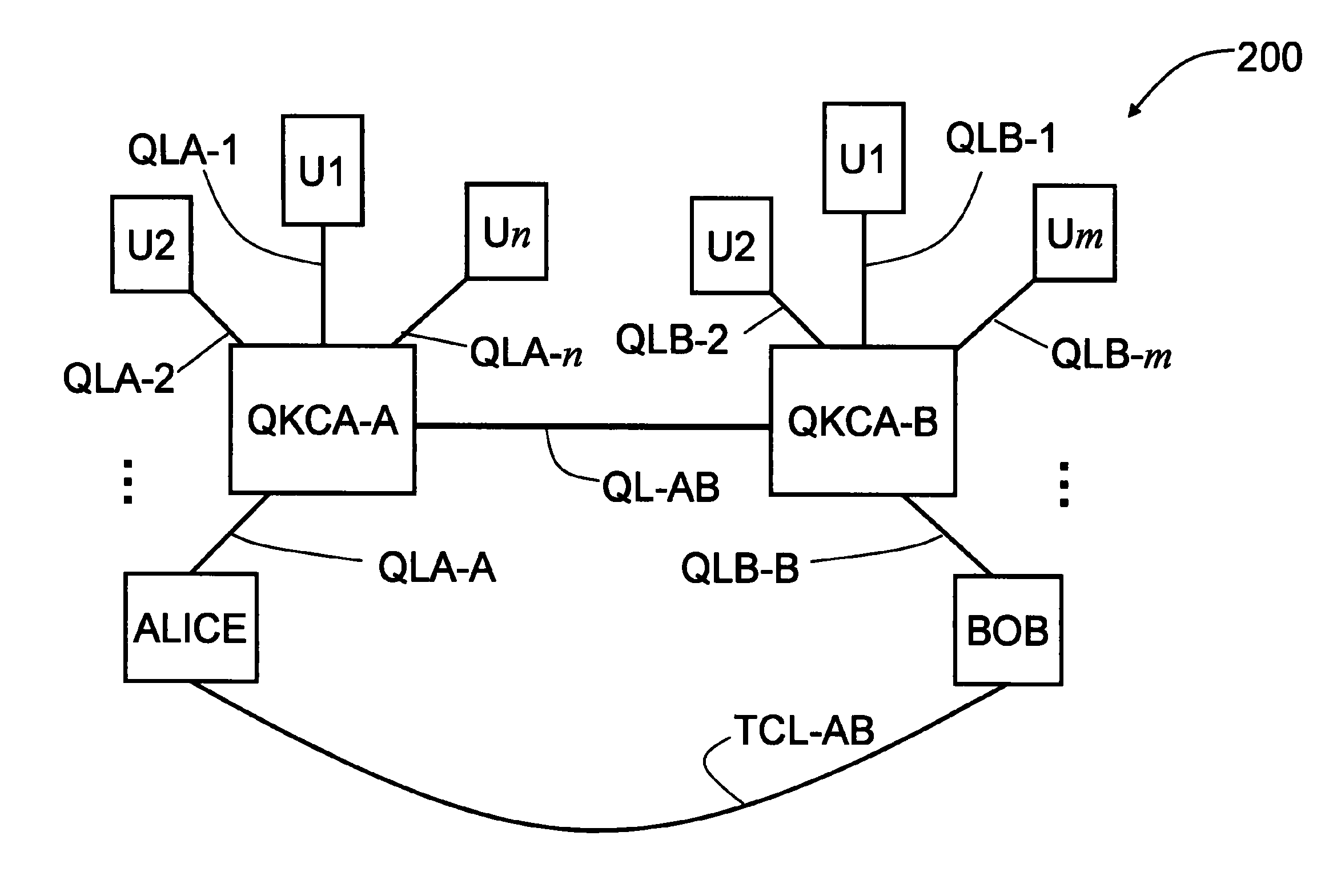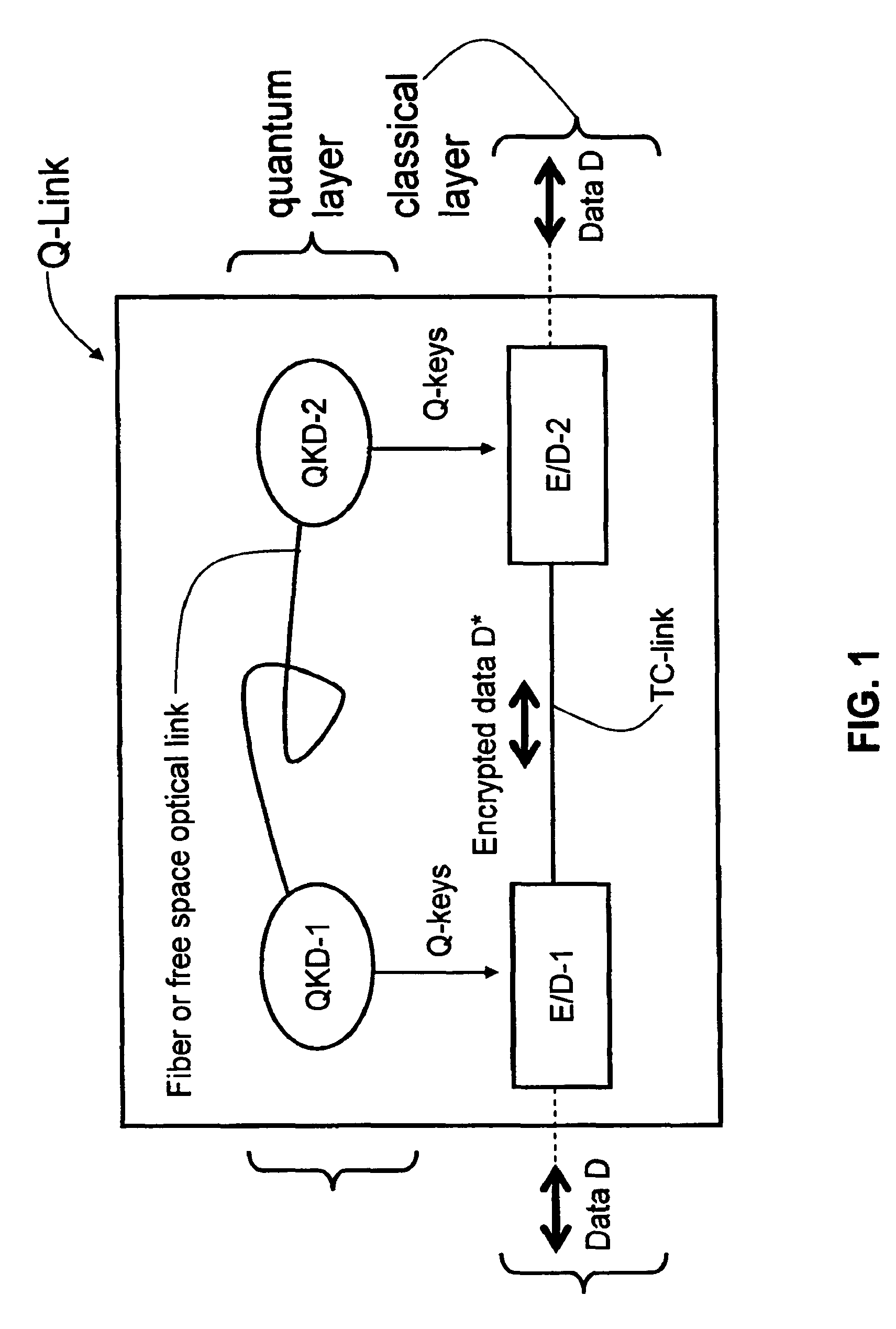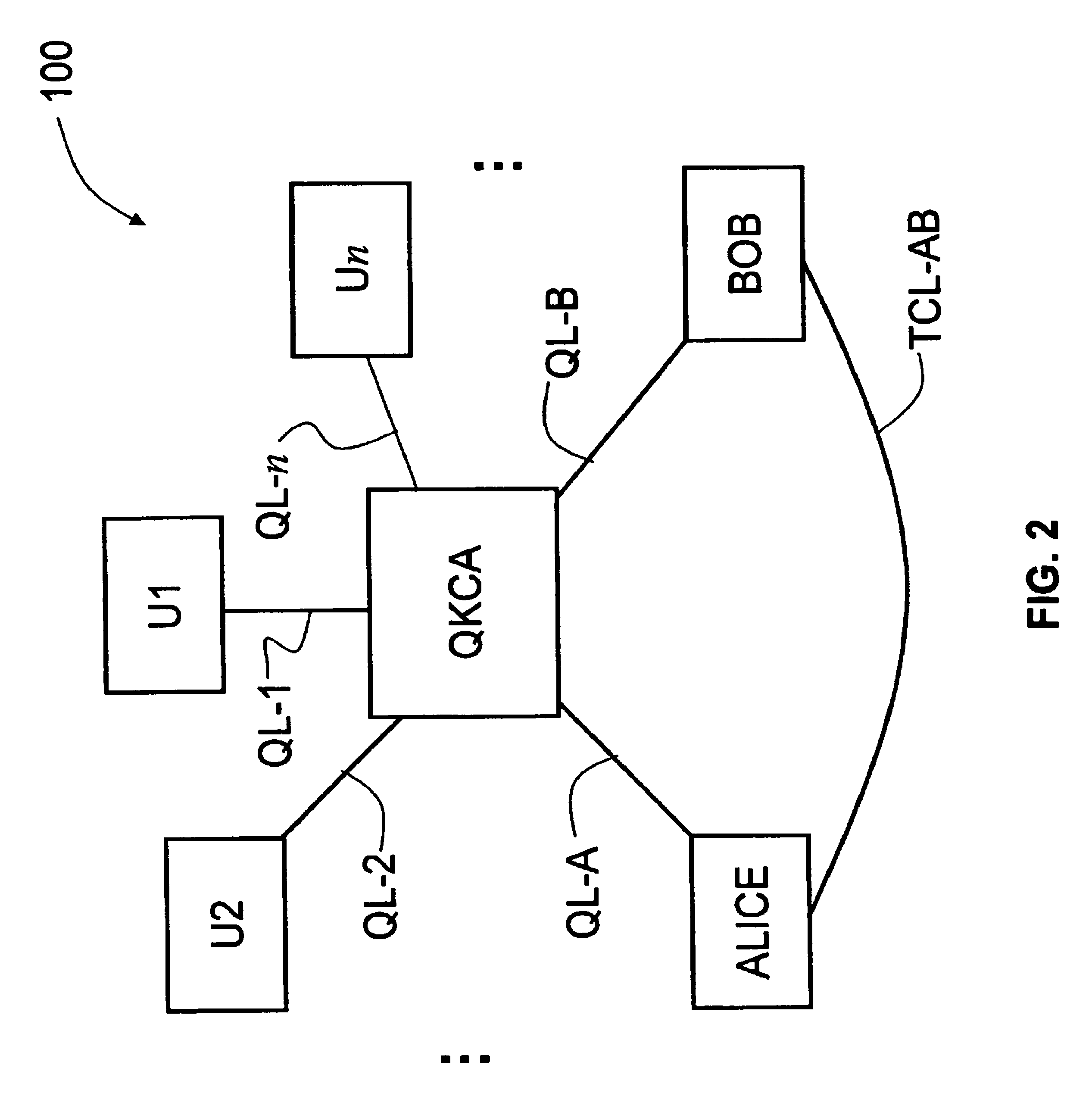Key management and user authentication for quantum cryptography networks
a quantum cryptography and user authentication technology, applied in the field of quantum communication, can solve problems such as logistical problems, introduction of errors that reveal her presence,
- Summary
- Abstract
- Description
- Claims
- Application Information
AI Technical Summary
Benefits of technology
Problems solved by technology
Method used
Image
Examples
example embodiments
[0016]The present invention refers to a “quantum network” or “Q-network,” which describes a communication infrastructure that includes Q-links and a traditional network communication infrastructure with a number n of users. The present invention employs a novel key management and authentication architecture. Example embodiments of how the QKI architecture of the present invention is used in Q-networks are described below.
first example embodiment
[0017]FIG. 2 illustrates an example of a star-topology Q-network 100 that includes an example embodiment of the QKI architecture according to the present invention. The QKI architecture in Q-network 100 includes a Quantum Key Certificate Authority, or QKCA.
[0018]FIG. 3 is a schematic diagram of an example embodiment of a QKCA according to the present invention. The QKCA is a trusted third party, i.e., it is an entity that issues authentication certificates (ACs) for use by other parties. Its functionality is similar to that of Certificate Authority in PKI. It is a point where Q-links are securely terminated. A Q-link provides an authenticated link between an end user and QKCA. On the other hand, two Q-links connected via a trusted third party—here, the QKCA—provide an authenticated channel for the end points (users).
[0019]Though in general the functionality of QKCA is similar to that of CA in PKI, there are some differences. A CA in PKI issues digital certificates that couple the id...
second example embodiment
[0032]FIG. 4 is a schematic diagram of a second example embodiment of a star-topology Q-network 200 that employs another example embodiment of the QKI architecture of the present invention. Q-network 200 is similar to that of FIG. 2, but includes two QKCAs, labeled QKCA-A and QKCA-B, operably coupled to one another by a Q-link QL-AB. Q-network 200 has n network users UA (UA1, UA2, . . . UAn) operably linked to the QKCA-A via respective Q-links QLA-1, QLA-2, . . . QLA-n. One of the n users is user Alice.
[0033]Likewise, Q-network 200 has m additional network users UB (UB1, UB2, . . . UBm) operably linked to the QKCA-B via Q-links QLB-1, QLB-2, . . . QLB-m, respectively, including user Bob. The n users UA are also linked directly to each other and to the m users UB only via TC-links TCL, of which one such link TCL-AB is shown between Alice and Bob.
[0034]The two main initial conditions of Q-network 200 are that all n users UA and m users UB trust the QKCA-A and the QKCA-B, and that Alic...
PUM
 Login to View More
Login to View More Abstract
Description
Claims
Application Information
 Login to View More
Login to View More - R&D
- Intellectual Property
- Life Sciences
- Materials
- Tech Scout
- Unparalleled Data Quality
- Higher Quality Content
- 60% Fewer Hallucinations
Browse by: Latest US Patents, China's latest patents, Technical Efficacy Thesaurus, Application Domain, Technology Topic, Popular Technical Reports.
© 2025 PatSnap. All rights reserved.Legal|Privacy policy|Modern Slavery Act Transparency Statement|Sitemap|About US| Contact US: help@patsnap.com



